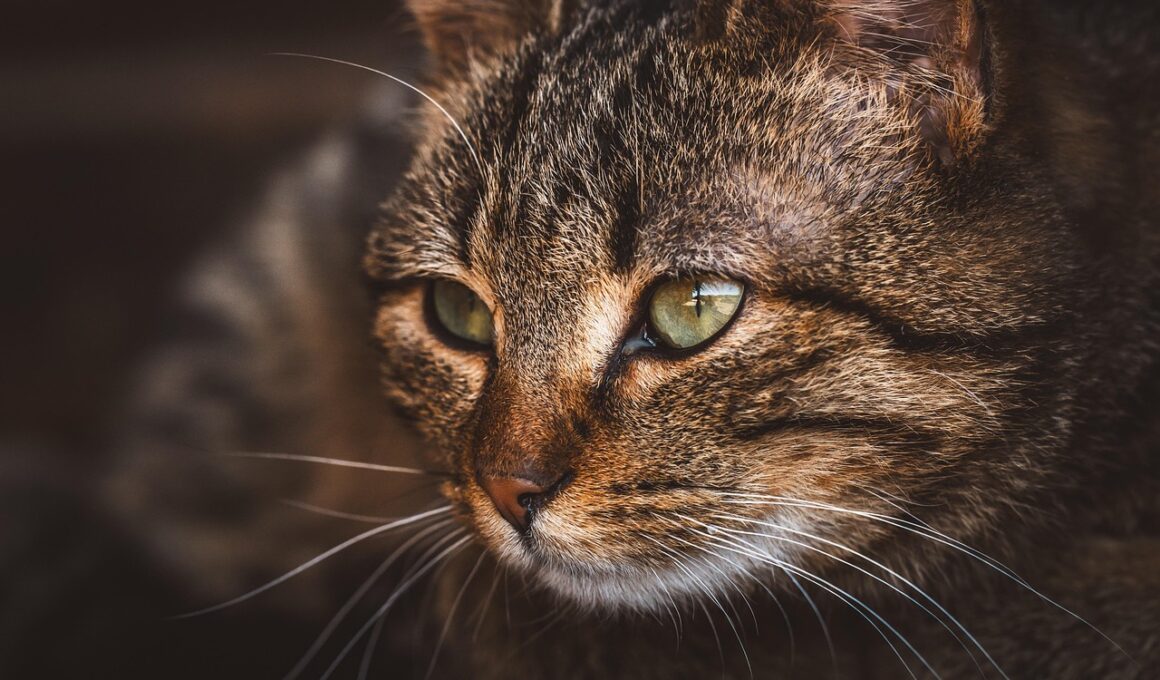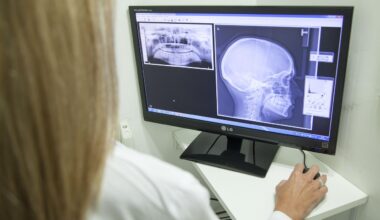Best Camera Settings for Cat Playtime Shots
Capturing playful moments of cats requires certain camera settings that can enhance the quality of your photographs. These settings can be adjusted based on the specific environment you find yourself in. Ideally, using a fast shutter speed is essential when photographing cats during their playtime. Continuous movement can be quite swift, and a fast shutter speed, such as 1/500s or faster, will help freeze their activity. In conjunction with shutter speed, an appropriate aperture is also crucial. A wider aperture allows for more light and creates a beautiful bokeh effect in the background, focusing the attention on your cat. Setting the aperture at f/2.8 to f/4 is useful for most situations. To complement these settings, keeping the ISO setting moderately high, such as 800 or above, is necessary in low-light conditions. This balance between shutter speed and aperture allows you to capture detailed and vibrant fur textures, making photos engaging. Lastly, remember to focus on your subject, using autofocus points, to ensure sharp images. A good lens can also make a significant difference.
To achieve the best results, continuous shooting modes can be incredibly beneficial during those energetic cat moments. Utilizing the burst mode on your camera enables you to take multiple shots in quick succession. This is particularly useful to capture the peak action when cats engage in a playful chase or leap. Having a comfortable grasp of your camera settings helps determine whether you need to adjust the modes based on lighting conditions. Consider adjusting your camera to shoot in RAW format, allowing more flexibility in post-production for color and contrast adjustments. As you experiment with angles, don’t overlook getting down to your cat’s eye level. This perspective adds a dynamic touch and brings viewers closer to your feline friend’s world. Furthermore, focus on the composition by applying the rule of thirds, which creates a more compelling image with visual interest. Try to incorporate the cat’s surroundings to add context during playtime. Lastly, patience is fundamental. Sometimes, the best shots take time, so observe your cat’s behavior before you begin shooting to understand the most opportune moments.
Lighting for Cat Photography
Good lighting is paramount in achieving stunning images of your cat during playtime. Natural light is often preferred, especially when indoor lighting may not be bright enough to capture detailed photos. Try to shoot during early morning or late afternoon when the sunlight is soft and flattering. Positioning yourself near windows can enhance the lighting, casting a natural glow on your subject. If you find yourself shooting in a darker environment, consider utilizing artificial light sources like softboxes or ring lights that provide diffused lighting. This method minimizes harsh shadows on your cat’s face and creates a soft, inviting appearance. When using additional lighting, remember to keep it steady and avoid sudden changes that might startle your pet. Always check your white balance settings to ensure the colors appear natural. Overhead lights can give an undesirable yellow tint to images, so always adjust accordingly. Additionally, if using flash, ensure it’s bounced off a surface instead of directed towards your subject. Too much direct flash can cause red-eye effects and harsh shadows, ruining an otherwise perfect capture.
In addition to camera settings and lighting, your choice of lens greatly impacts the quality of your cat photographs. A fast lens with a wide aperture allows for more light and helps to create beautiful, blurred backgrounds that make your feline the main focus of the image. Lenses in the 50mm or 85mm range are often ideal for pet photography, allowing you to work from a distance while capturing sharp details. Alternatively, a zoom lens can provide flexibility, especially when trying to capture spontaneous moments of play. When your cat is moving swiftly, the focal length of a zoom lens can help you frame the shot without disturbing their playful energy. Furthermore, pay attention to the focal point; aim to capture your cat’s eyes sharply in focus since they are a key element that draws viewers into the photograph. The right lens complements the overall composition, ensuring stunning shots that showcase the personality and beauty of your pet during playtime. Each moment is unique, so having various lenses can prepare you for every photo opportunity.
Planning Your Shoot
Planning your photo sessions around your cat’s playtime habits can lead to stunning images. Different cats have various peak activity times, so identifying when your kitty is the most active is essential in capturing the best moments. Try observing their behavior; some may prefer morning play, while others thrive in the afternoon or evening. Ensure the play area is spacious, offering room for movement and fun setups for engaging play. Include toys or interactive pieces that stimulate the cat’s interest. Your setup should also minimize distractions that can easily divert their attention away from the camera. Choosing a background that contrasts with your cat’s fur can elevate your images, ensuring your pet stands out. Minimal, clutter-free backgrounds are often best, preventing the eyeline from scattering to other subjects. You can even incorporate natural elements or rugs that align with your cat’s personality. Setting up the scene before your photoshoot can create an inviting atmosphere that encourages spontaneous play. It’s crucial to stay relaxed throughout the session, which reflects in your cat’s behavior, resulting in more candid shots.
Another invaluable tip is to keep your photography gear ready and easily accessible. When you notice your feline friend playing or preparing to jump, having your camera nearby ensures you don’t miss incredible moments. Consider creating a dedicated cat photography bag that includes all your essentials like extra batteries, lenses, and memory cards. It’s recommended to keep backup batteries charged, ensuring you will not miss any fleeting moments. Also, have cleaning wipes ready; often, dust can settle on the lens, affecting your images. Ensuring your camera settings are reliable takes time to master but is essential for capturing spontaneous moments. You may want to use preset configurations that accommodate your typical shooting scenarios. Utilize a checklist that indicates various settings depending on the environment, such as bright or dim lighting conditions. These practices allow you to focus more on the playful antics of your pet rather than fiddling with settings during the shoot. The more prepared you are, the easier it becomes to capture those magical playtime moments with your cherished companion.
Post-Processing Tips
Post-processing can turn an excellent cat photo into something extraordinary. After capturing your playful moments, uploading your photographs to editing software such as Adobe Lightroom or Photoshop can enhance the overall appearance. Start by correcting the exposure, adjusting shadows and highlights to reveal intricate details hidden in the fur. Use color corrections to ensure the true colors of your cat are represented and eliminate any unwanted distortion caused by lighting. The sharpness can also be refined; use sharpening tools appropriately to enhance the eyes and bring focus to your subject. Cropping the image can assist in framing your cat correctly, discarding distractions within the shot. Additionally, consider using filters or presets that resonate with your photography style, adding a unique touch to your images. While editing can indeed transform the look, it’s crucial to maintain the natural essence of your cat. Creating a consistent style over time can enhance your portfolio and reflect your artistic vision. Thus, a careful approach to post-processing will culminate in photographs that truly capture the joy and energy of your feline’s playtime.
The journey into cat photography, particularly capturing those lively playtime moments, merges technique, equipment, lighting, and creative vision. By adopting the best camera settings and maintaining versatility and patience, the result will be captivating photographs that showcase your feline’s unique traits. It’s essential to remain observant of their behavior and adapt your technique in accordance with the settings you prioritize for varying situations. The essence of photography lies in emotion and storytelling, allowing each picture to convey not just a moment, but also the quirky series of moods that embody your cat’s character. Invest some time in practicing these skills as often as possible; you may find that photographing your cat not only serves as a delightful hobby, but also strengthens the bond between you two. As your skills develop, the photographs will evolve, reflecting a deeper connection and understanding of your feline friend’s playtime personality and intricacies. So, embrace the adventure of capturing cat photography, and curate a collection of unforgettable playtime moments that will be cherished for years to come. Happy snapping!


